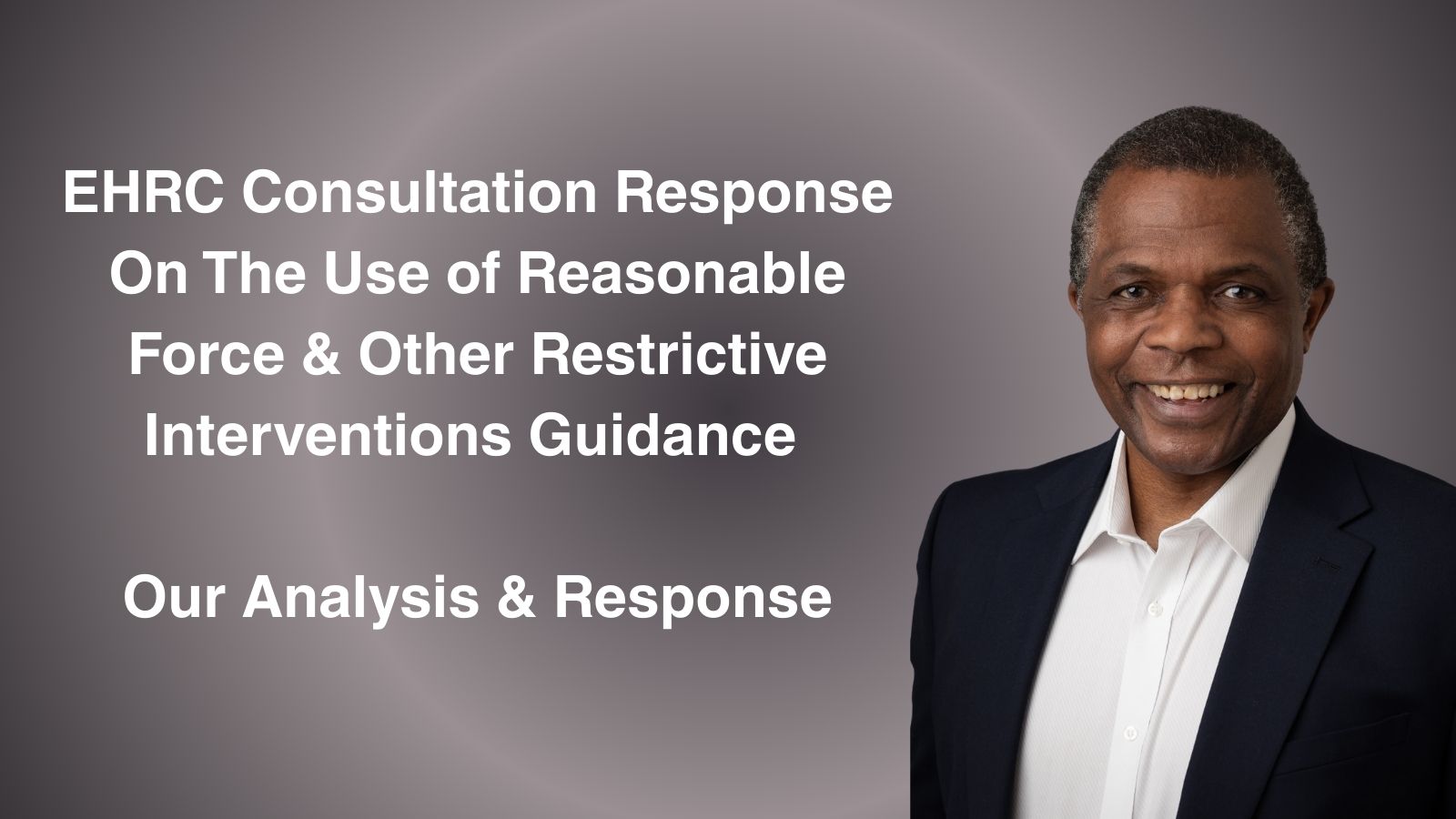Executive Summary
This article critically examines the proposed restraint guidance in schools released by the Equality and Human Rights Commission (EHRC) and the Department for Education (DfE).
It highlights how existing legal frameworks already provide sufficient protection and explores how new guidance, if poorly implemented, could paradoxically increase the risks it aims to reduce.
It warns against an over-reliance on national training standards and urges schools to focus on lawful, tailored risk assessments instead.
Equality and Human Rights Commission Draft Guidance
Legal Framework Already Covering Restraint Guidance in Schools
The UK already possesses a strong legal foundation governing the use of force in educational settings:
-
Common Law: Permits the use of reasonable force to prevent harm.
-
Criminal Law Act 1967: Allows necessary force to prevent crime.
-
Children Act 1989: Places the child’s welfare as paramount.
-
Human Rights Act 1998: Protects against degrading treatment and enshrines respect for private life.
-
Health and Safety at Work Act 1974 & Regulation 3(1) of the Management of Health and Safety at Work Regulations 1999: Requires schools to assess and reduce risks to both staff and pupils.
These existing statutes already oblige schools to carry out individualised, competent risk assessments — a standard far superior to applying generic, centralised practices.
Why National Training Standards Could Undermine Restraint Guidance in Schools
1. Over-Reliance on Generic Restrictive Practices
Generalised national training may seem helpful but often introduces systemic problems:
-
Ignores individual needs: Uniform techniques may disregard trauma-informed practices or SEN-specific requirements.
-
Institutionalises restraint: Staff may fall back on restrictive practices due to compliance pressure, rather than as a last resort.
-
Reduces judgment: Centralised protocols can deskill staff by overriding professional discretion.
2. Gatekeeping by Unregulated Training Providers
Historically, several restraint training bodies have promoted models that:
-
Are legally insufficient under UK law.
-
Prioritise market positioning over child safeguarding.
-
Are still adopted by government-endorsed agencies despite their shortcomings.
A system that allows non-independent providers to define “standards” invites inconsistency and potential legal breaches.
Health and Safety Law: Already Fit for Purpose
Under Regulation 3(1), schools are legally required to:
-
Conduct suitable and sufficient risk assessments for employees and others affected by their operations.
-
Use competent persons to conduct these assessments.
-
Tailor plans to the unique risks each pupil may pose or face.
This framework already compels schools to build safe, individualised strategies rather than rely on one-size-fits-all training schemes. Implementing new guidance that undermines this obligation is unnecessary and potentially harmful.
Restraint Guidance in Schools Risks a Paradoxical Outcome
The draft restraint guidance in schools may inadvertently raise risk levels by:
-
Encouraging rigid compliance over professional judgment.
-
Fostering proceduralism that prioritises form-filling over ethical decisions.
-
Reducing the flexibility needed for dynamic, individualised safeguarding interventions.
Children with SEND or trauma histories are particularly vulnerable to harm when staff operate within rigid guidelines that ignore complexity.
Recommendations to Improve Restraint Guidance in Schools
-
Avoid Mandatory National Standards
Focus on outcome-based guidelines that permit school leaders to design context-appropriate, lawful practices. -
Audit Legal Compliance Over Guidance Compliance
Enforce existing law; especially Regulation 3(1) of the Management of Health & Safety at Work Regulation 1999, through inspections and accountability frameworks, not via new training mandates. -
Vet Training Providers Through Independent Oversight
Establish a body of legal, medical, educational, and human rights experts to certify restraint training providers and their curricula. -
Improve Incident Reporting Systems
Reporting should focus on context, antecedents, and individual care plans — not just procedural ticks.
Conclusion
The proposed restraint guidance in schools is well-intentioned but risks replacing lawful best practices with generalised, potentially unsafe methods.
UK law already provides the tools to protect both staff and children.
What is needed is consistent enforcement, not more layers of guidance.
Without careful redesign, the draft proposals may foster a dangerous paradox: increasing the harm they aim to prevent.
What To Do Next
Start your journey with NFPS Ltd by contact us today – https://nfps.info/contact-nfps/
1: We have always prided itself on providing legally accurate and legally defensible training.
2: The training we provide covers all of the requirements of UK law (as stated in this article) and always has.
3: It is also internally and externally verified by Pearsons (the UK’s largest Awarding Body), regulated by Ofqual.
4: Making our training a perfect fit for any educational establishment.
5: And our training doesn’t need to be ‘endorsed’ or ‘approved’ by any other certification process, especially when those certification processes offer a less legal option!
If you are a school, college, university, care home, hospital, security company, or indeed any UK organisation looking for training, we are the perfect fit for you.
Start your journey with NFPS Ltd by contact us today – https://nfps.info/contact-nfps/

